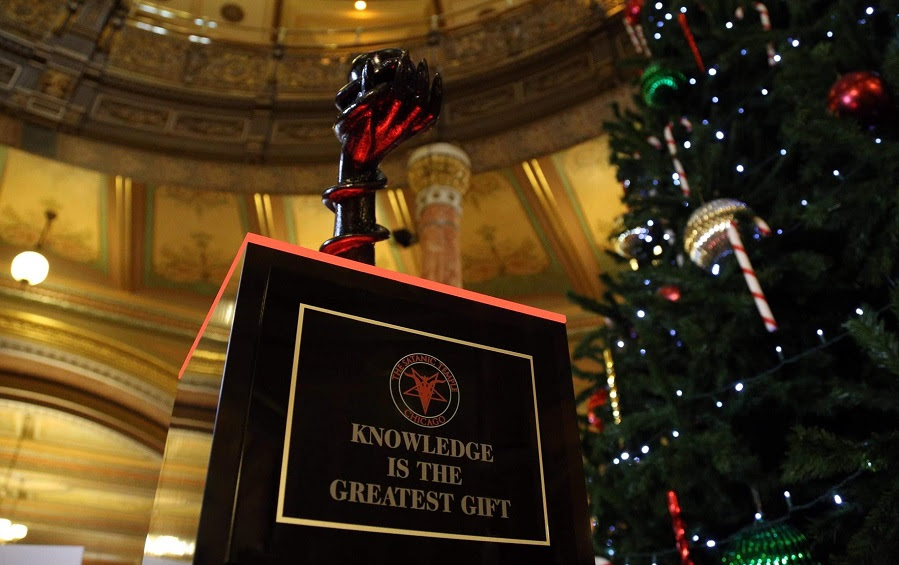By Universal Life Church Ministries |


Move over, Christmas tree and Menorah. It’s time to make room for Satan.
The Satanic Temple has earned a spot in the Illinois Capitol rotunda holiday display, where it has erected a 4 1/2-foot-tall sculpture depicting its own religious message. The sculpture features an extended forearm of a young woman wrapped in a coiled snake, apple in hand, called “Knowledge is the Greatest Gift.”
According to its creators, the sculpture represents the biblical story of Adam and Eve, who eat the forbidden fruit from the tree of knowledge in the Garden of Eden – against God's orders and at the devil's insistence.
“We see Satan as a hero in that story, of course, spreading knowledge,” explains Satanic Temple chapter leader and spokesman Lex Manticore. “It’s the greatest individual pursuit of bettering yourself, and we believe that you should basically act with the best scientific understanding of the world when you make decisions.”
Despite objections from religious groups, First Amendment protections mean state officials had no choice but to allow the display to remain alongside traditional holiday decorations.
What Does the Satanic Temple Believe?
Manticore seeks to downplay tired stereotypes about Satanists, describing how members don't actually believe in deities or the supernatural. “Not only do we not worship a literal Satan, but we don’t believe one actually exists. Satan for us is a metaphor. ... Throughout literary history, (it’s) been used as a character that represents rebellion in the face of religious tyranny,” he says.
At a national level, the group has been keen to rebrand itself and shed the image – perhaps reinforced by negative media portrayals – of a bunch of Jesus-hating nihilists dead-set on making life uncomfortable for others. To that end, the Satanic Temple describes itself as “a non-theistic organization, the mission of which is to encourage benevolence and empathy among all people, reject tyrannical authority, advocate practical common sense and justice, and be directed by the human conscience to undertake noble pursuits guided by the individual will.”
What does that translate to in practice? A lot, apparently. Their website highlights ongoing opposition to the Westboro Baptist Church, support for abolishing corporal punishment in public schools, and challenging anti-abortion laws. However, the group is undoubtedly best known for its advocacy surrounding equal religious representation on public property.
On the Front Lines
The Satanic Temple has been involved in a number of high-profile disputes over religious displays in recent years. Back in August, the group famously protested Arkansas’ decision to put up a Ten Commandments monument at the state capitol by setting up their own monument to Baphomet, a goat-headed Satanic figure. The event – and the Satanic Temple leaders behind it – were profiled in a recent Vice News segment which characterized them not as “a group of devil worshipers, but liberal political activists who oppose the increasing influence of the religious right in American politics.”
“I think that all art is about provocation,” Manticore says. “It’s about inspiring thought and emotion. Certainly, we can’t control whether someone finds something offensive or not.”
In other words, although Satanic displays may be shocking to some – particularly Christians who are convinced that the devil is real – their goal is not the downfall of religion. Instead, Satanists want to make space for a plurality of religious beliefs to exist, and in the process ensure the government doesn’t endorse any one religion in particular.


No hay comentarios:
Publicar un comentario